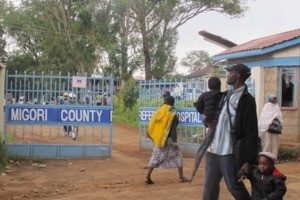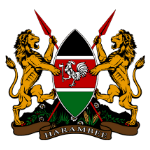Introduction
A number of tangible achievements linked to RMNCAH scorecard use have been reported by Migori County officers in the areas of resource mobilization, data quality and service delivery. Support from political leaders and partners in the county have been instrumental in this process. To ensure power outages and internet network challenges do not interfere with the Scorecard review process, the County has committed to printing and distributing the updated scorecards on at least a quarterly basis to not only those attending county-level review meetings but also to the sub-counties, wards and health facilities for their routine data reviews. Advocacy forums are held to empower county lawmakers with RMNCAH Scorecard and other data for planning and policy decisions.
Background
County Health Management Team (CHMT) members were introduced to the RMNCAH Scorecard in Q4 2015. This was initiated by the County Health Records and Information Officer (CHRIO) who became familiar with this management and accountability tool through meetings with various partner organizations, including MEASURE Evaluation and UNICEF. CHMT, Sub-County HMT (SCHMT) and county program officers were keen to be trained on the Scorecard as they saw it as an important process that would help them understand and interpret performance of the health sector in the county.
Support from Partners in the Roll-Out of the Scorecard Management Tool. MEASURE Evaluation’s PIMA Project in 2016, as well as USAID’s Tupime Kaunty and Afya Halisi projects more recently, have been instrumental in covering training and other costs which have now been decentralized down to the ward and health facility (HF) levels. Access rights to the online RMNCAH Scorecard website have been given to the County Health Director and key RMNCAH partners, as well as all Health Records and Information Officers (HRIOs) and Reproductive Health Coordinators (RHCs) at both the county and sub-county levels.
How it works
The county government – along with UNFPA and USAID – jointly cover the cost of quarterly performance reviews at both the county and sub-county levels during which the RMNCAH Scorecard and its associated Action Plan are presented first and discussed in detail. However, to ensure power outages or internet network problems do not interfere with the review process, the Scorecards are printed and distributed during the review meetings. This also allows the printed Scorecard to be later discussed at the sub-county review meetings in which the wards and Facility-in-Charges participate. Facility-in-Charges are also discussing their facility-specific Scorecard data during their monthly Health Facility Management Team (HFMT) meetings. Printing costs are covered by partners who are invited to all CHMT and SCHMT quarterly review meetings, as well as the County’s Annual Workplan Review Meetings, in which the RMNCAH Scorecard is also presented and discussed.
Uptake – regular use and appreciation – of the RMNCAH Scorecard tool and platform has really improved at all decentralized levels in the county.
Tom Odhong, Community Health Coordinator, Migori County
Tangible achievements linked to RMNCAH scorecard use in Migori County
Resource mobilization
When the Scorecard was first introduced in 2015, family planning (FP) commodity coverage was found to be below 40%. Further analysis of this Scorecard data led to an equal concern about the gap in adolescent services in the county. As a result, costed implementation plans for family planning and adolescent health were developed. For three consecutive financial years (2017 to 2019) county funding for related services increased by 40% from KSH 10 million to KSH 14 million (~$100,000 to ~$140,000). The increased funds have been used for FP training in 66 health facilities. In addition, resources were raised to train Community Health Volunteers (CHVs) to be able to provide counseling, oral contraceptives and condoms, as well as offer referral for long-acting and permanent contraception. Efforts were made to encourage voluntary FP uptake in areas with low FP commodity coverage through focused community dialogues facilitated by Assistant Chiefs. By Q2 2019, FP commodity distribution had risen from below 40% to 57%.
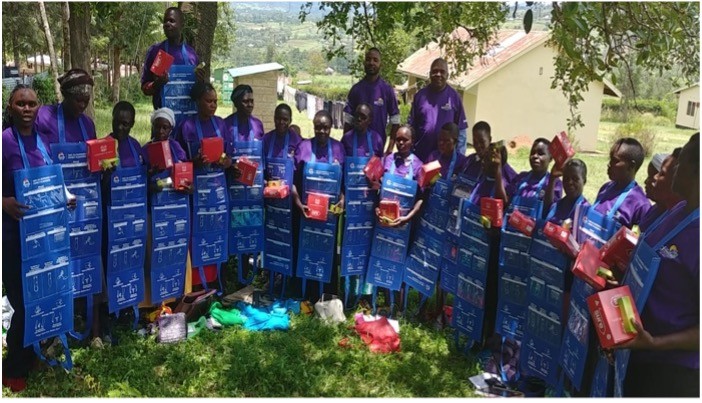
Political commitment
Kuria East has proven to be a sub-county showing exemplary political commitment following RMNCAH Scorecard use. Members of the County Assembly (MCAs) often attend the county and/or sub-county review meetings. In addition, a quarterly advocacy forum for MCAs is organized with the support of partners (Bill and Melinda Gates Foundation TCI-Family Planning Project and the UN Health Six coalition) in order to empower lawmakers with RMNCAH Scorecard and other data for planning and policy decisions. After seeing the Scorecard, one MCA took action to improve uptake of skilled birth assisted deliveries (SBA) and the four recommended ante-natal care (ANC4) visits for new mothers and babies within his ward by using Ward Development Funds to improve road access to 2 HFs. This resulted in ANC4 service coverage improvement in that sub-county from 20% to 52% from Q3 2017 to Q2 2018. The improved road infrastructure is also credited with a 50% increase in SBA at the targeted health centres. The sub-county then mobilized resources from the county government, national Linda Mama programme and the National Health Insurance Fund (NHIF) to build staff houses at HFs so that 24/7 SBA services could be provided and ensure all new mothers would leave the facility with a birth certificate. Lastly, the funds were used to support CHVs to map all pregnant women for early referral for antenatal, birth and postnatal care (PNC) services.
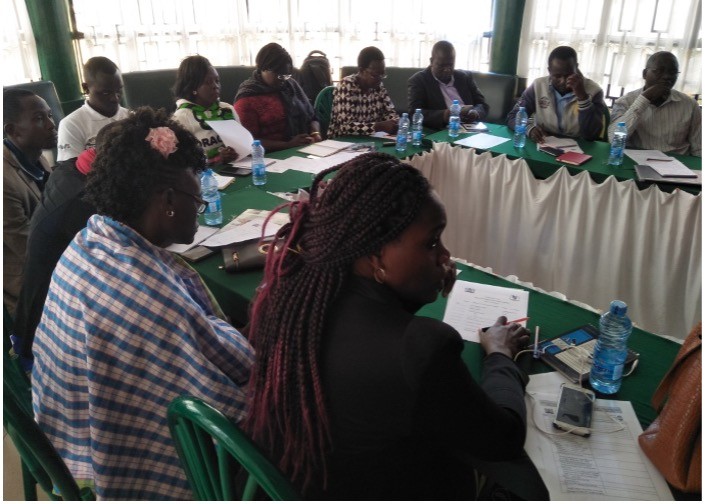
Data quality
Due to the high-profile visibility and use of the Scorecard, it is acknowledged to have created healthy competition between sub-counties to submit complete and timely routine HMIS and DHIS2 reports. For the first half of 2019, 100% of the sub-counties in Migori County submitted complete reports, while 97% were timely. Whereas in 2016, reporting completeness in the county was at 91% and timeliness was at 83%. In addition, specific sub-counties have been identified for focused data-related training or supplies support based on Scorecard analysis. Examples include Rongo Sub-County needing computers and internet data bundles; mentorship on deworming data reporting to be provided to the HF in Uriri Sub-County; and support supervision to be scheduled with Suna East Sub-County to improve weekly HF data reviews.
Stakeholder coordination
Since implementation of the RMNCAH Scorecard, the CHMT has organized quarterly Stakeholder Forums on a more consistent basis. These forums are attended not only by health sector implementing partners but also by county line ministry representatives from the sectors of education, youth, gender and the judiciary; and by local opinion leaders from the teaching profession, religious community, youth champions, etc. Use of the Scorecard at Stakeholder Forums has led to greater focus on RMNCAH strategies by partners in collaboration with the county, including Afya Halisi, Tupime Kaunty and Lwala Community Alliance among others. A significant example is the development of the costed Multi-Sectoral Adolescent and Youth Plan (MAYP) which involved well-coordinated partner effort and the creation of a real-time tracking tool.
Service delivery improvements
Measures taken similar to those described above in Kuria East Sub-County have been replicated across other parts of the county; and by 2018, SBA and ANC4 service coverage had begun to show significant improvements county-wide (see graph below). A new tool was also rolled-out to help Community Health Volunteers (CHVs) map and track pregnant women which further assisted early identification and close follow-up by CHVs. The actions taken are linked to ANC 4 coverage increasing from 26% to 57% between Q4 2017 and Q2 2019. Skilled deliveries also increased from 58% to 78% over the same period with the change attributed to Traditional Birth Attendant (TBA) referral training, 24-hour coverage and on-the-job training on long-acting reversible contraceptives (LARC) and neonatal resuscitation at targeted HFs, emergency obstetric and neonatal care (EmONC) training in 55 facilities, and coaching between CHMT mentors and SCHMTs. One primary HF experiencing consistent staff shortages, Wathonger Dispensary, dramatically increased its SBA deliveries by employing TBAs as casuals. Finally, the RMNCAH Scorecard indicators were used in Migori County to help estimate staffing need and complete a recent WHO-developed staff workforce redistribution exercise known as Workload Indicators of Staffing Need (WISN).

Over 40% increase in funding
for FP and adolescent health interventions
Over 31% improvement in ANC4 coverage
Scorecard review showed low ANC uptake and consequent actions included roll-out of a new tool to track pregnant women
Success story: RMNCAH scorecard leads to MoH workforce recognition
In Migori County, awards are offered to high-performing members of the health workforce based on RMNCAH Scorecard indicator and other service coverage improvements. At each Quarterly Performance Review Meeting, sub-counties with the most improvement in RMNCAH Scorecard indicators are verbally recognized and given a certificate. During conferences and workshops, Health Workers and CHVs are also asked to share success stories related to their work.
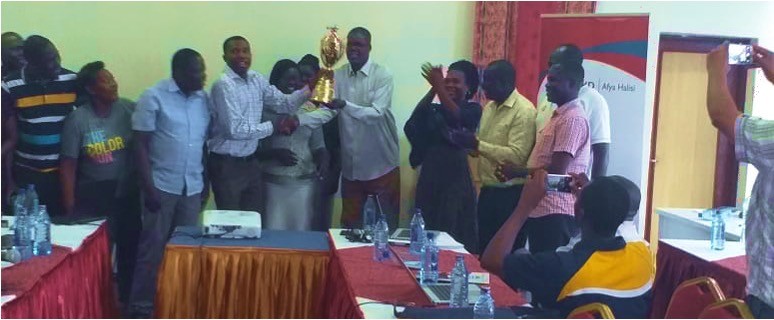
This practice is showing great potential in boosting the confidence and sense of appreciation among the health sector workforce. Annually, the best performing Health Workers are provided with trophies and certificates. They are selected using criteria which includes service coverage improvements as evidenced on decentralized and disaggregated data tools including the RMNCAH Scorecard. For community-based health workers, including Community Health Assistants, CHVs and TBAs, a Community Health Service Summit is held each year during which Scorecard data is also referenced. Reproductive Health Champions, many of whom are men from the community, are also recognized at this event.
The First Lady of Migori County serves as one of the county’s most active Family Planning Champions as well as RMNCAH Scorecard Champion. She attends as many of the recognition ceremonies as possible and is keen to highlight achievements documented on the RMNCAH Scorecard. In the future, the county plans to also acknowledge health workers who actively use data in their work.
Other innovative features of Migori County’s use of the Scorecard include:
- The formation of multi-sectoral partnerships and planning with other county sector departments, the judiciary, adolescent/youth groups and religious leaders. This has particularly happened in response to FP and other adolescent issues as brought to light through Scorecard analysis (e.g. teen pregnancies, gender-based violence)
- The dissemination of Scorecard indicator data visualizations to MCAs, other political leaders and RMNCAH Champions. Maps produced by the Scorecard web platform have proven to be particularly powerful advocacy tools for increased political commitment.
Future plans
For the implementation of the Scorecard and further decentralization, Migori officials have planned the following activities:
- Institutionalize use of the RMNCAH Scorecard web platform action tracker across the county and sub-counties
- Intensify bottleneck analysis and targeted action to achieve last mile improvements in RMNCAH Scorecard indicator coverage after a few years of dramatic improvement
- Continue quarterly Scorecard data printing and dissemination to all levels; including to HFs which will continue to receive monthly printouts
- Begin to share the Scorecard with the County Governor
- Continue to monitor Family Planning indicators to better understand recent declines in FP commodity coverage and respond as soon as possible
- Use the scorecard management framework at the HF level to improve low recorded PNC rates through actions such as provision of PNC registers at both Maternal and Child Health (MCH) and PNC clinics, data entry mentorships, and continuation of sending mobile phone reminders to pregnant women for PNC visits along with having HWs assist the women to register with the NHIF for free Linda Mama maternity services
Scorecard milestones
- 2016: RMNCAH Scorecard introduced to CHMT, RMNCAH TWG established
- 2017: Decentralization of Scorecard Use to Sub-County and Wards
- 2018: RMNCAH TWGs established in sub-counties
- 2019: Web-based Scorecard Action Tracker introduced at sub-county level
